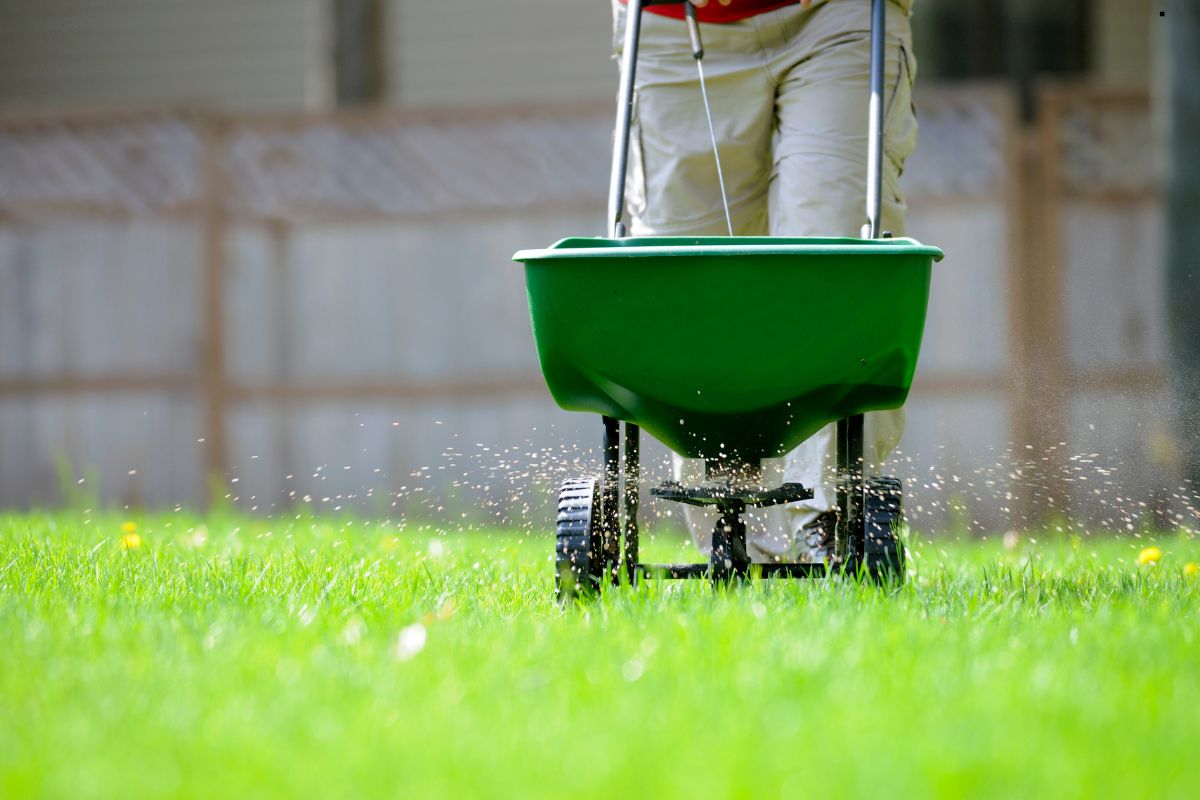
Want a lush, green lawn without breaking the bank or harming the environment? You can! This guide provides easy, effective DIY lawn fertilizer recipes and techniques to nourish your grass naturally. Learn how to create your own custom blends using common household items and achieve a vibrant, healthy lawn
Why Choose DIY Lawn Fertilizer?
Making your own lawn fertilizer might seem intimidating, but the benefits are significant. First and foremost, it saves you money. Store-bought fertilizers can be expensive, especially if you have a large lawn. DIY options often use ingredients you already have or can purchase cheaply. Second, you have complete control over the ingredients, ensuring a healthier lawn and environment. You can avoid harsh chemicals and synthetic additives that can harm beneficial microbes in your soil. Finally, it’s environmentally friendly. By using organic materials and reducing your reliance on commercially produced fertilizers, you contribute to a more sustainable approach to lawn care. Call us for professional guidance on your lawn care needs.
Understanding Lawn Fertilizer Basics

Before diving into recipes, it’s crucial to understand the basics of lawn fertilization. All fertilizers, whether DIY or store-bought, are characterized by their N-P-K ratio. This ratio represents the percentage of Nitrogen (N), Phosphorus (P), and Potassium (K) in the fertilizer.
The N-P-K Ratio: What Do Those Numbers Mean?
The N-P-K ratio tells you the proportion of each key nutrient. Understanding what each nutrient does helps you choose the right fertilizer for your lawn’s specific needs.
- Nitrogen (N): The Green Booster: Nitrogen promotes healthy green growth. It’s essential for chlorophyll production, which gives grass its vibrant color and fuels photosynthesis.
- Phosphorus (P): Root Development: Phosphorus is crucial for root development and establishment. It helps young seedlings establish strong root systems and supports the overall health of mature lawns.
- Potassium (K): Overall Health & Hardiness: Potassium enhances the lawn’s ability to withstand stress, such as drought, disease, and temperature fluctuations. It strengthens cell walls and improves overall plant vigor.
Soil Testing: Know Your Lawn’s Needs
Fertilizing blindly without knowing your soil’s nutrient profile is like taking medicine without knowing what ails you.
Why Soil Testing is Crucial
A soil test reveals the current nutrient levels in your soil and helps identify any deficiencies or imbalances. This knowledge allows you to tailor your fertilizer applications, providing your lawn with exactly what it needs and avoiding unnecessary applications that can be wasteful or even harmful. Learn more about how professional services can benefit your lawn by visiting our Lawn Care Services page.
How to Perform a Simple Soil Test
You can purchase a DIY soil test kit from most garden centers or online retailers. Follow the instructions carefully, collecting samples from various locations in your lawn. Alternatively, contact your local cooperative extension office for information on professional soil testing services.
Interpreting Your Soil Test Results
Your soil test report will provide data on pH levels, nutrient levels (N, P, K), and other important factors. Compare these results to the optimal ranges for your grass type. Use this information to select the appropriate DIY fertilizer recipes and adjust the ratios to address any specific deficiencies
DIY Fertilizer Recipes
Now for the fun part: crafting your own custom lawn fertilizer blends! Here are some simple and effective recipes you can try:
Recipe 1: The Epsom Salt Green-Up
Epsom salt (magnesium sulfate) is a readily available mineral compound that can give your lawn a quick boost of green color. Magnesium helps with chlorophyll production, enhancing the vibrancy of your grass.
- Ingredients: tablespoon Epsom salt per gallon of water.
- Instructions: Dissolve the Epsom salt in the water thoroughly. Pour the solution into a garden sprayer or watering can.
- When to Apply: Apply to your lawn every 2-4 weeks during the growing season. Avoid applying during extremely hot or dry periods.
Recipe 2: The Kitchen Compost Tea Booster

Compost tea is a liquid fertilizer made by steeping compost in water. It’s packed with beneficial microbes and nutrients that can revitalize your lawn.
- Ingredients: 1 part compost, 5 parts water.
- Instructions: Place the compost in a burlap bag or pantyhose. Submerge the bag in a bucket of water and let it steep for 24-48 hours, stirring occasionally. Remove the bag and use the tea to water your lawn.
- When to Apply: Apply compost tea every 2-4 weeks during the growing season.
Recipe 3: The Coffee Grounds Acid Lover
Coffee grounds are a great source of nitrogen and other nutrients. They also help improve soil drainage and aeration. They are particularly beneficial for lawns that prefer slightly acidic soil.
- Ingredients: Used coffee grounds.
- Instructions: Spread the coffee grounds thinly and evenly over your lawn.
- When to Apply: Apply coffee grounds every 1-2 months during the growing season. Be sure to use used coffee grounds as fresh grounds are too acidic
Recipe 4: The Grass cycling Nutrient Return
Grass cycling is one of the simplest ways to fertilize your lawn. Leave your grass clippings on the lawn after mowing instead of bagging them. As they decompose, they release valuable nutrients back into the soil. For more expert tips on improving your lawn’s health, visit our Lawn Treatment Services page.
- Ingredients: Your lawn clippings.
- Instructions: Mow your lawn regularly, using a mulching mower to finely chop the clippings. Leave the clippings on the lawn to decompose.
- When to Apply: Every time you mow!
Application Techniques
When and How to Apply Your DIY Fertilizer
Timing and technique are essential for successful fertilization.
- Best Time of Year to Fertilize: Fertilize during the growing season (spring and fall) when your lawn is actively growing. Avoid fertilizing during the hottest months of summer or when the ground is frozen
- Even Application is Key: Use a garden sprayer, watering can, or fertilizer spreader to apply your DIY fertilizer evenly across your lawn.
- Watering After Application: Water your lawn immediately after applying fertilizer to help the nutrients soak into the soil and prevent leaf burn.”
Safety Precautions and Best Practices
Wear Protective Gear
When mixing and applying DIY fertilizers, wear gloves and eye protection to avoid skin and eye irritation.
Avoid Over-Fertilizing
More isn’t always better. Over-fertilizing can burn your lawn, pollute waterways, and create an unhealthy environment. Always follow the recommended application rates.
Store Ingredients Properly
Store your fertilizer ingredients in a cool, dry place, out of reach of children and pets.
Troubleshooting
Common Issues and Solutions
Even with the best intentions, problems can sometimes arise. Here are some common issues and how to address them:
- Yellowing Grass: Could indicate a nitrogen deficiency or over-fertilization. Perform a soil test to determine the cause.
- Slow Growth: Could indicate a nutrient deficiency or soil compaction. Aerate your lawn and apply compost or compost tea.
- Weed Problems: A healthy, dense lawn naturally resists weeds. Apply a pre-emergent herbicide in early spring to prevent weed seeds from germinating.
Conclusion
With these DIY lawn fertilizer recipes and techniques, you can achieve a lush, green lawn without spending a fortune or harming the environment. Embrace the power of natural ingredients and create a thriving outdoor space that you can be proud of. If DIY seems challenging, remember professional help is available. Call us for a tailored solution from your local lawn care experts.
FAQs
Is DIY lawn fertilizer as effective as store-bought fertilizer?
Yes, when properly formulated and applied, DIY lawn fertilizer can be just as effective as store-bought fertilizers. The key is understanding your lawn’s specific needs through soil testing and choosing the right ingredients and recipes.
Can I use these recipes on all types of grass?
The recipes provided here are generally safe for most common grass types. However, it’s always a good idea to research the specific needs of your grass variety and adjust the recipes accordingly.
How often should I apply DIY lawn fertilizer?
Apply DIY lawn fertilizer every 2-4 weeks during the growing season, depending on the specific recipe and your lawn’s needs.
Is Epsom salt safe for my lawn?
Yes, Epsom salt is generally safe for lawns when used in moderation. However, over-application can lead to salt buildup in the soil, so follow the recommended application rates carefully.
What do I do if I accidentally over-fertilize my lawn?
Water the affected area thoroughly to dilute the fertilizer and prevent leaf burn. In severe cases, removing the damaged grass and re-seeding may be necessary. Contact us for expert guidance on lawn repair and maintenance..
